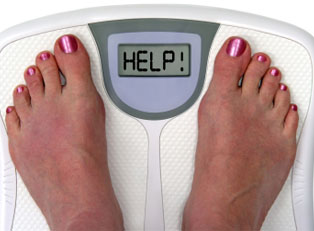Having a baby is absolutely amazing and the best day of your life...but it also leaves your body looking nothing like it did nine months ago. Of course, regular (even moderate) exercise and a balanced diet during pregnancy is the best prevention, but no matter how carefully you watch your waistline, it is going to stretch. Gaining a couple more prenatal pounds than you intended tends to be part and parcel of the pregnancy package. Here are five great exercises for turning your stomach from flab back to fab after pregnancy.
Note: If you don’t normally exercise, always talk to your doctor before beginning a new workout regimen. Also, check with your midwife or obstetrician before starting any strenuous activity during or after pregnancy. While some exercises, like pelvic tilts, are generally safe about a week after delivery, things like flutter kicks should wait for about three months. Cesarean deliveries often need longer recovery times.
Pelvic Tilt
While working your abs is important, Kegel exercises are also crucial for new moms -- and what’s better than working both at the same time? Lay down with your arms at your sides and pull your heels comfortable close to your bottom. Squeeze your buttocks, contract your abs, tighten your Kegels, and then tilt your pelvis (this should lift your lower back up). Add a pillow under your back and/or between your knees. [Hint: If you don’t know where your Kegels are, stop your urine midstream next time you have to pee. Those are your Kegels.]
Isometric Crunches
Isometric exercises work by tightening the muscle and holding it, rather than contracting and releasing repetitively. To start isometric crunches, lay down on the floor. Lift your shoulders off the ground with your hands behind your head (not pushing or pulling on your neck) or straight out in front of you. Lift your shoulders off the floor and hold for 30-60 seconds. To increase your work, lift both feet a few inches off the ground at the same time.
Leg Lifts
You can perform leg lifts singly or in tandem. Start with one leg at a time if you are not used to exercising. Lay down on the floor with your arms past your ears. Lift your left leg and right arm up; point your toes toward the ceiling (or as close as you can get -- remember you want to work your muscles, not rip them) and reach for your toes with your fingers (or as close as you can get). Lower your limbs slowly back to the ground (flopping or dropping isn’t going to do much for any of those muscles), then repeat with the opposite limbs. Aim for 15-20 sets.
For both legs simultaneously, tuck your hands under your lower back and lift straight legs until your toes are pointing to the ceiling. As the lifts become easier, you can keep your feet hovering between reps.
Flutter Kicks
As your stomach muscles become stronger, flutter kicks can be an extremely effective means of toning. Lay on your back with your arms and legs flat and straight. Lift both legs about a foot off the ground. Move your feet away from each other, then back together until your right foot is over your left without touching. Extend your feet out, then back to hovering, opposite foot above.
Moving faster can add a bit of cardio to your workout. However, slower, more deliberate movements tend to be more effective at building strength. Instead of going out, you can bring one leg up higher. Additionally, you can raise your shoulders off the ground (like crunches), flutter your arms with your legs, or lay your upper body on a bench and perform the kicks upside down.
Pelvic Bridge
One more time, lay down on the ground. Bend your knees so that your feet are almost directly beneath, with your legs hip-width apart. Contract your abdomen and lift your lower back off the ground, using your pelvic muscles, until your body makes a straight, slanted line from knees to chest. Aim for 5-10 repetitions.
The goal of these exercises may not necessarily be to lose inches but to tighten your abdomen back up. During pregnancy, your skin has to stretch to accommodate the extra space your bundle of joy takes up -- and that often occurs rather quickly. After labor, your tummy doesn’t just suck back up to its pre-existing condition; most new moms are faced with extra skin that wasn’t there before.
Remember not to have unrealistic expectations from your body -- expect about nine months to a year for your body to return to normal.



